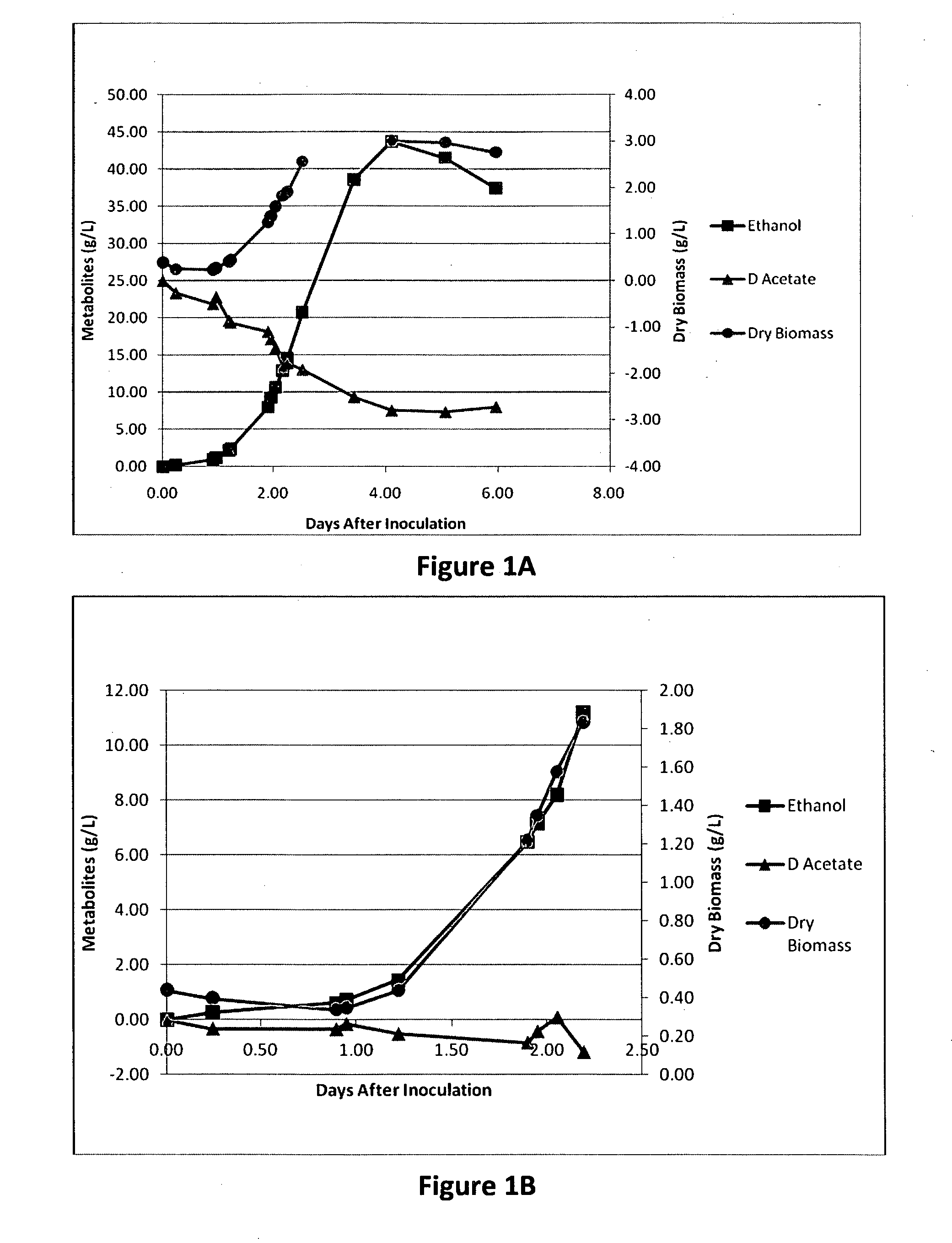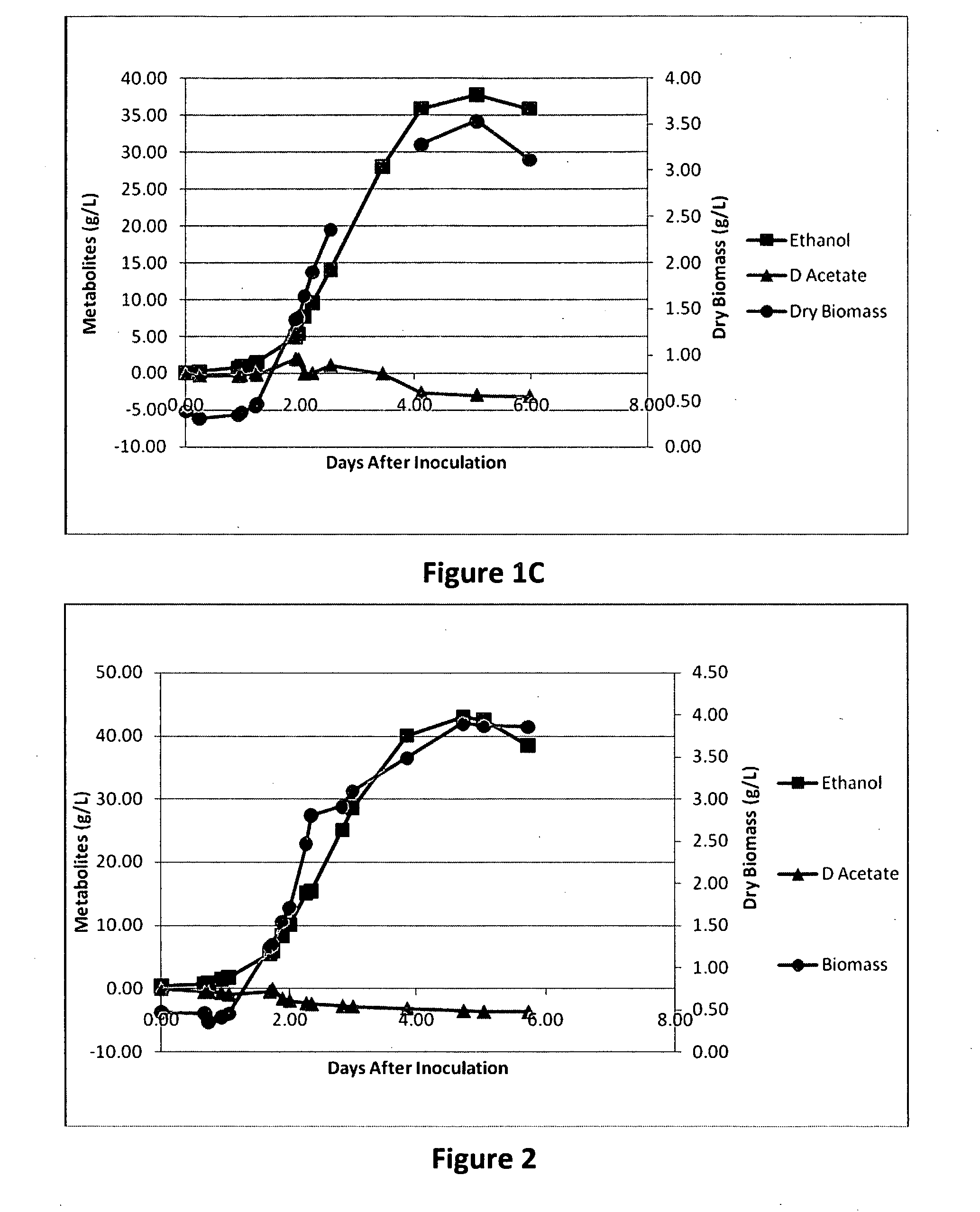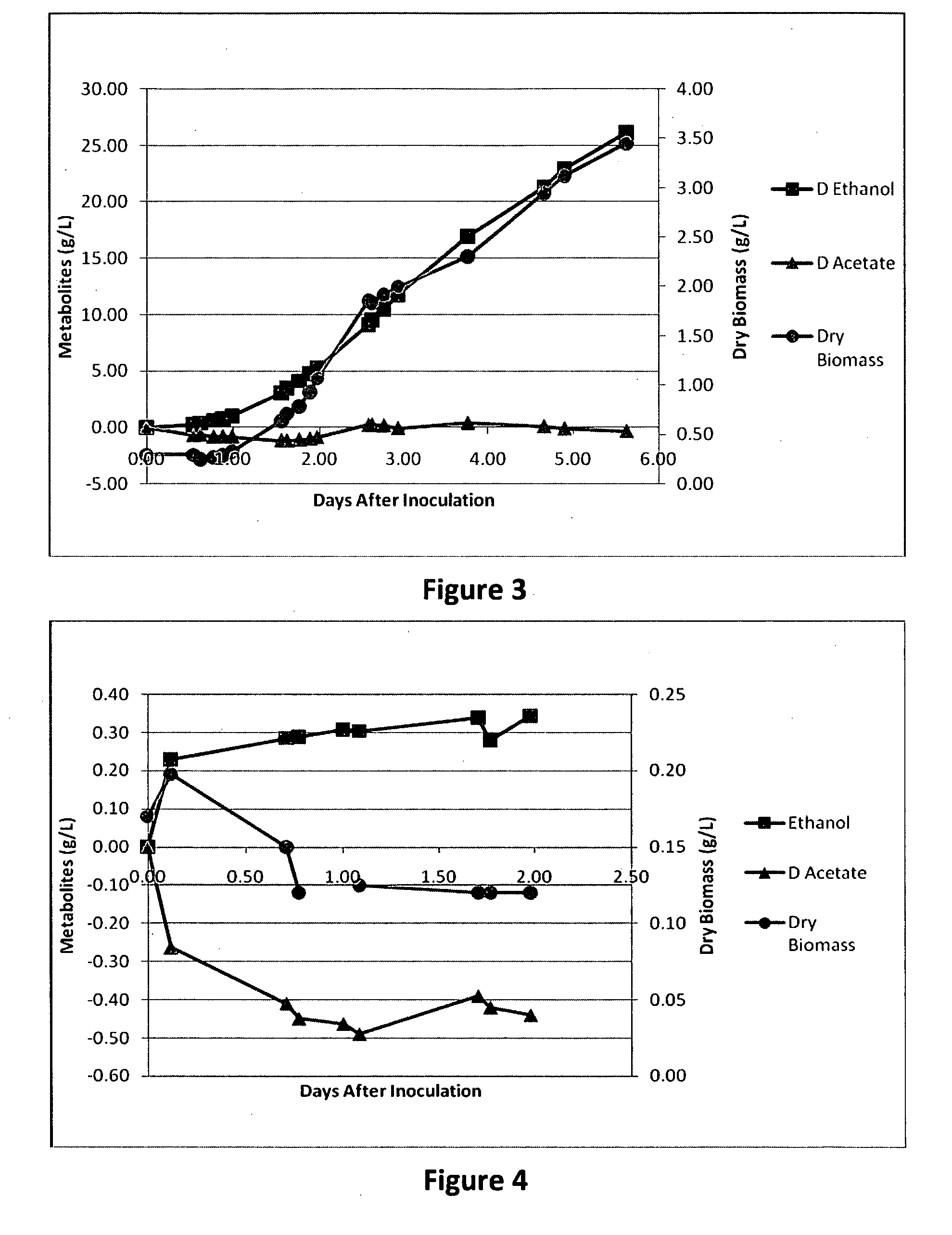Optimised fermentation media
a technology of optimising fermentation media and fermentation process, which is applied in the direction of microorganisms, biofuels, sulfur compounds, etc., can solve the problems of affecting the cost of these carbohydrate feed stocks, the efficiency of ethanol production using such fermentation processes is less than desirable, and the cultivation of starch or sucrose-producing crops is not economically sustainable in all geographies, so as to improve the growth efficiency of a bacterial culture
- Summary
- Abstract
- Description
- Claims
- Application Information
AI Technical Summary
Benefits of technology
Problems solved by technology
Method used
Image
Examples
example 1a
Batch Fermentation in CSTR Using Novel Nutrient Media and Polysulfide
[0197]Approximately 1.3 L of solution A was transferred into a 2 L fermenter and sparged with nitrogen. H3PO4 (85% solution, 2.025 mL, 30 mM) was added and the pH adjusted to 5.3 using conc. NH4OH(aq). Solution B (13.5 mL) was added and the solution sparged with N2. Chromium(II)chloride was added until the ORP of the solution decreased to approximately −200 mV, wherein resazurin (1.35 mL of a 2 g / L solution) was added. Sodium polysulfide (2.7 mL of a 3M solution) was added and the solution sparged with N2 then CO containing gas (1% H2; 13% N2; 71% CO; 15% CO2). Metal sulfide solution 1 (150 mL) was added and the solution sparged a further 30 minutes, before inoculation with an actively growing Clostridium autoethanogenum culture at a level of approximately 5% (v / v).
example 1b
Batch Fermentation in CSTR Using Novel Nutrient Media and Polysulfide
[0198]Approximately 900 ml of solution A was transferred into a 1 L fermenter and sparged with N2. H3PO4 (85% solution, 1.425 mL, 30 mM) was added and the pH adjusted to 5.3 using conc. NH4OH(aq). Solution B (9.5 mL) was added and the solution sparged with N2. Chromium(II)chloride was added until the ORP of the solution decreased to approximately −150 mV, wherein resazurin (0.95 ml of a 2 g / L solution) was added. Sodium polysulfide (3.8 mL of a 3M solution) was added and the solution sparged with N2 then CO containing gas (1% H2; 13% N2; 71% CO; 15% CO2). Metal sulfide solution 1 (50 mL) was added and the solution sparged a further 30 minutes, before inoculation with an actively growing Clostridium autoethanogenum culture at a level of approximately 5% (v / v).
example 1c
Batch Fermentation in CSTR Using Novel Nutrient Media and Polysulfide
[0199]Approximately 1.3 L of solution A was transferred into a 2 L fermenter and sparged with nitrogen. H3PO4 (85% solution, 2.025 mL, 30 mM) was added and the pH adjusted to 5.3 using conc. NH4OH(aq). Solution B (13.5 mL) was added and the solution sparged with N2. Chromium(II)chloride was added until the ORP of the solution decreased to approximately −200 mV, wherein resazurin (1.35 mL of a 2 g / L solution) was added. Sodium polysulfide (5.4 mL of a 3M solution) was added and the solution sparged with N2 then CO containing gas (1% H2; 13% N2; 71% CO; 15% CO2). Metal sulfide solution 1 (150 mL) was added and the solution sparged a further 30 minutes, before inoculation with an actively growing Clostridium autoethanogenum culture at a level of approximately 5% (v / v).
[0200]Results: FIGS. 1A, B and C show microbial growth and ethanol productivity against time in batch fermentation experiments under similar conditions....
PUM
| Property | Measurement | Unit |
|---|---|---|
| concentrations | aaaaa | aaaaa |
| concentration | aaaaa | aaaaa |
| volume | aaaaa | aaaaa |
Abstract
Description
Claims
Application Information
 Login to View More
Login to View More - R&D
- Intellectual Property
- Life Sciences
- Materials
- Tech Scout
- Unparalleled Data Quality
- Higher Quality Content
- 60% Fewer Hallucinations
Browse by: Latest US Patents, China's latest patents, Technical Efficacy Thesaurus, Application Domain, Technology Topic, Popular Technical Reports.
© 2025 PatSnap. All rights reserved.Legal|Privacy policy|Modern Slavery Act Transparency Statement|Sitemap|About US| Contact US: help@patsnap.com



